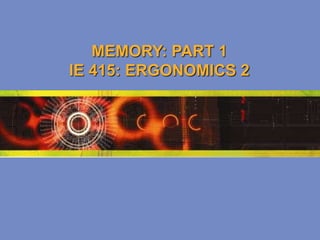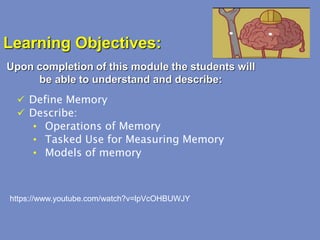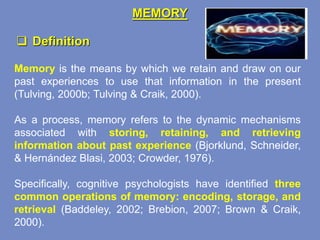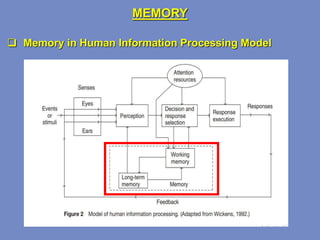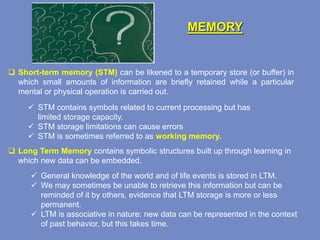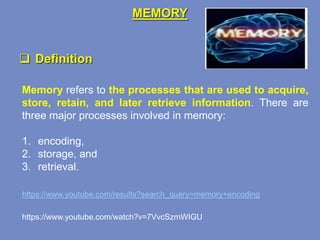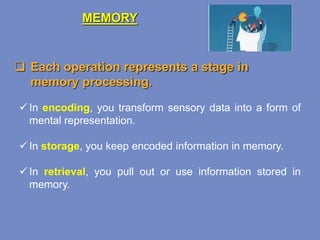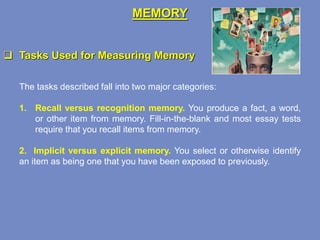Memory refers to the processes of acquiring, storing, and retrieving information. It involves three main operations: encoding, which transforms sensory data into mental representations; storage, which keeps encoded information in memory; and retrieval, which pulls information from storage. Memory is measured using tasks that involve recalling information from memory or recognizing previously encountered information, and that test implicit versus explicit memory.
